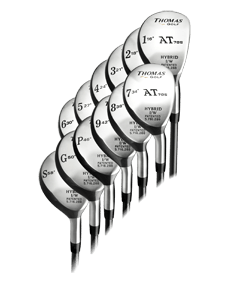So if you want to improve your golf pitching, it’s really important that you understand the science behind the club that you’re using when you’re using your pitching wedge or if you’re using your gap wedge or your sand wedge, same principle applies. What goes into making this club work and then how do we get the best out of it when we play a golf shot. When you hit a golf ball from the ground, you generally are going to strike the floor, you’re going to take something of a divot, now the depth and shape and size of that divot is often controlled by the size of the club head and more importantly the bounce on the sole of the club head. Now a bounce is the angle that the leading edge seats above the trailing edge, simply the trailing edge is lower than the leading edge by a number of degrees. And for most wedges that would be between six and eight degrees. For sand wedges it’d be a little bit more, maybe up to 14 degrees for a sand wedge and then less for a long wedge. Now that bounce angle is allowing the club to dig into the turf to a certain amount, but not too much. Now if you’re playing your pitching shot but you’re not utilizing the bounce angle, you’re not be – really taking away an insurance policy that you should have. So if I play the ball a long way back in my stance with my hands a long way ahead, I’ve reduced the amount of bounce; I had eight degrees on my wedge as soon as I move my hand till eight degrees forward, I’m now getting zero degrees of bounce. As I bring that club head steadily down into the ball, that would really dig in and if I did that on the turf and then hit one inch behind, my insurance policy can’t work, the bounce can’t work; the club will want to just descend under the ball and it will be a very aggressively fat shot leaving my shots very short.
Now if that sounds like something you might have been doing, you might be too far back in the stance, too far hands ahead, too steep and hitting very aggressively down on the ball; no bounce, too fat, ball come up too short. If we understand how the pitching wedge is made with the bounce then we can use the bounce, we can start to utilize as insurance policy a little bit more, so when you do make a mis-hit, you get away with the mis-hits a little bit better. So I would always suggest that when you play your pitching shots, you play the ball around about the center of your stance. You have your hands slightly ahead but only very slightly, so I still got a good degree of bounce on the back of the sole of golf club. Then as the club comes down into the floor, if it catches the ground slightly, that bounce angle doesn’t let the club dig in too much, it actually pushes the club and skids the golf club forward into the back of the ball making my fat shot very, very minimal so I don’t really notice it too much. And again it’s the changing sand, that’s quite a heavy, aggressive club slowing down kind of shot. Play the ball more central, play the hands level and again skid and the club just skids over. I’m still hitting down into the turf but the club’s just sliding under the back of the ball. So utilizing the bounce angle, using my insurance policy to hit my wedges nice and smoothly, nice and high and if I do make a mistake and I do hit the ball fat, I get away with it more when I’m using my bounce angle.





